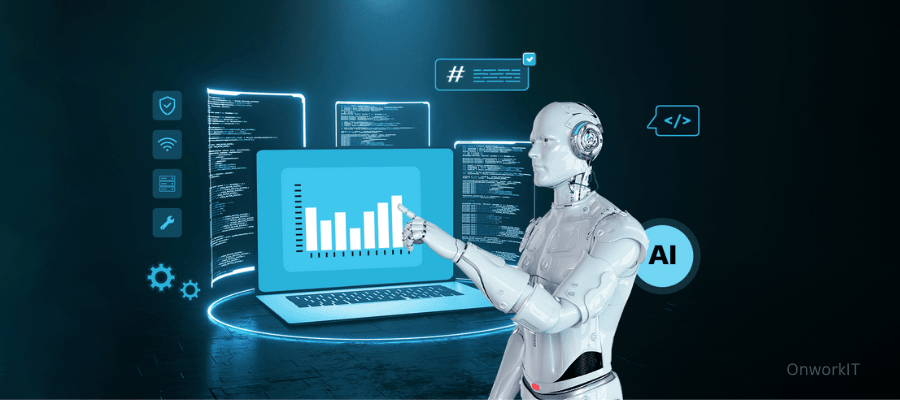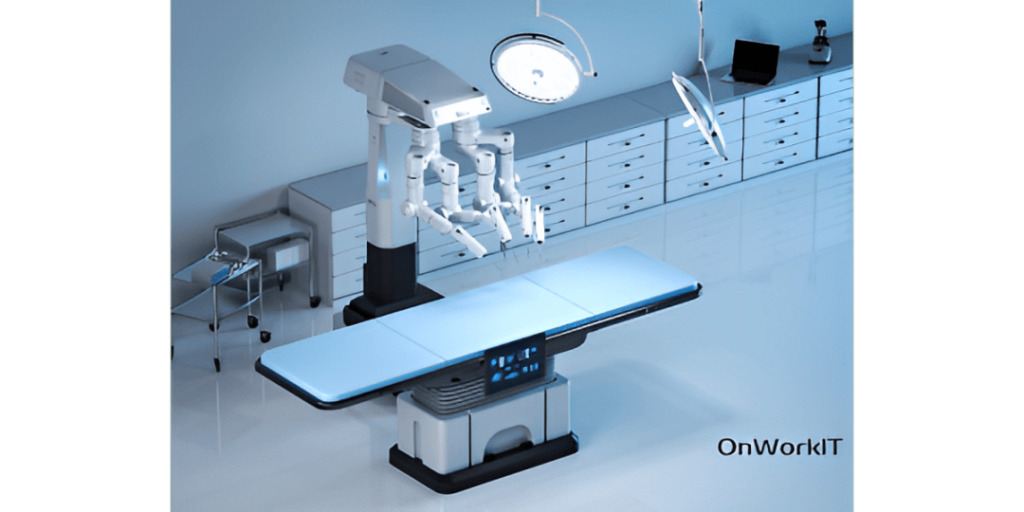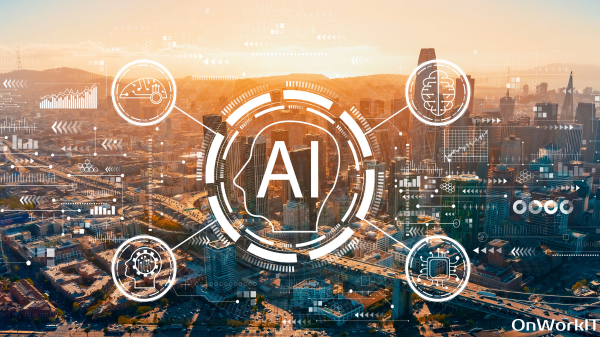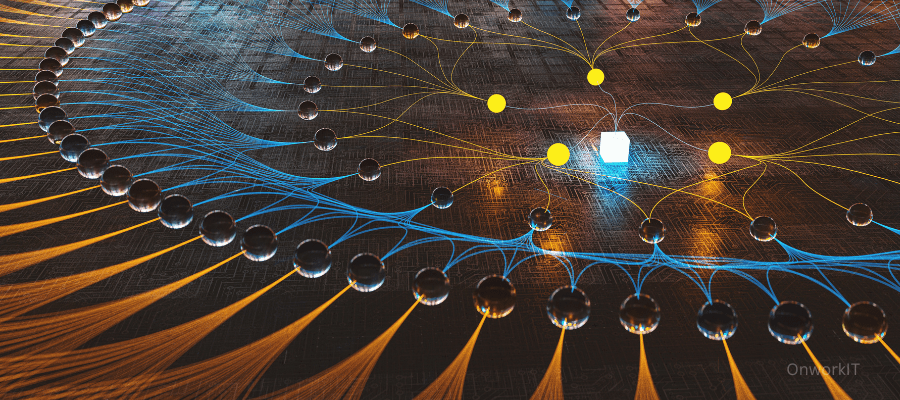AI will change software development :In the 1990s, when people talked about software programming, it typically meant choosing an editor, checking code into CVS or SVN repositories, and then compiling the code into executable files. Integrated Development Environments (IDEs) like Eclipse and Visual Studio emerged to streamline the entire software development lifecycle (SDLC), integrating programming, development, documentation, building, testing, and deployment processes, thus boosting developers’ efficiency.
In recent years, the rise of cloud computing and DevSecOps automation tools has enhanced developers’ capabilities, enabling more enterprises to develop, deploy, and maintain software applications more easily.
Today, generative AI as a catalyst for the next generation of development paradigms is poised to change how enterprises create and maintain software, introducing new development tools and paradigms. Many developers are starting to wonder if AI will render traditional programming skills obsolete. Simultaneously, IT leaders across various enterprises are considering how AI will impact the future development of SDLC and DevSecOps. In this article, we will explore answers to these questions.

Is generative AI a new tool or a new development approach?
Joe Duffy, CEO of Pulumi, believes, “AI will enhance automation in programming, significantly boosting enterprise productivity and output, elevating the abstraction level of human operations without replacing programming altogether.” Ashish Kakran from Thomvest Ventures suggests, “Generative AI is disrupting the software delivery lifecycle,” making development and DevOps teams more productive.
As generative AI capabilities continue to improve, the roles of developers will also evolve. Ed Thompson, CTO of Matillion, suggests, “Current forms of Copilots actually enhance developers’ efficiency by eliminating their past busywork. Those who assume Copilots have fundamentally changed the programming landscape are mistaken; developers’ work is not just about writing code but solving real-world problems.” How exactly will generative AI change the landscape of software development? “
1. Generating standard code based on natural language prompts
Kaxil Naik, Airflow Engineering Director at Astronomer, suggests, “AI-generated code templates and AI-assisted Copilots translate natural language into functional code, simplifying the understanding of complex codebases and ensuring adherence to development best practices, thereby making programming more efficient.”
According to StackOverflow’s 2023 Developer Survey, 70% of developers are using or planning to use AI tools in their development processes. Among those already using AI for development, over 82% are using AI to write software code. These numbers indicate a significant shift in how developers traditionally write code, reuse existing code, and build components.
2. Code validation remains a critical responsibility for developers
Apart from making programming simpler and more efficient, developers also bear the important responsibility of spending considerable time and using efficient tools to validate code, ensuring that generated code is free of security issues or performance flaws.
Peter McKee, Director of Developer Relations at Sonar, emphasizes, “As developers increasingly rely on AI to boost productivity, they have a responsibility to thoroughly review AI-generated content.” Continuous checks and monitoring during delivery ensure thorough cleaning alongside programming. Developers can spend more time on new tasks rather than fixing potential errors and vulnerabilities in manually created or AI-generated code. McKee adds, “Failure to scan and monitor AI-generated code automatically will lead to exponentially increasing code and technical debt that will need fixing later.”
3. Becoming a new development model for large enterprises
How will using generative AI tools to develop code impact various development teams in large enterprises supporting thousands of applications and standards? If developers need to write less code and integrate more with code developed by generative AI, what will the development work look like in large enterprises?
Markus Eisele from Red Hat’s Developer Tools and Strategy Advocacy department suggests, “Different tool combinations across teams lead to a lack of standardization and unified development practices, not to mention cognitive differences among developers.” A centralized development portal built by AI can facilitate easy access for development teams and achieve best practices across teams by eliminating friction in collaborative processes. This transformation suggests that integrated development environments may evolve into assembly platforms, akin to Computer-Aided Design (CAD) in manufacturing or Building Information Modeling (BIM) in construction. The focus shifts from building custom components to assembling existing ones and using built-in tools to validate designs.
4. Reduction in programming volume and increased code supply chain risks
Another impact of developing code using generative AI involves how enterprise leaders will formulate policies and monitor which supply chain codes are embedded in enterprise applications. Historically, enterprises have focused on tracking open-source and commercial software components. In the future, they will need to add this new layer of outputs generated by AI.
Ilkka Turunen, Chief Technology Officer at Sonatype, suggests, “Developers will play a crucial role in maintaining and managing AI supply chains. They will scrutinize AI model security, authenticity, and sources rigorously in daily enterprise operations. By implementing AI risk assessments and properly managing AI model bill of materials, enterprises should ensure appropriate AI security and management in development infrastructure.”
In practice, Static Application Security Testing (SAST), Dynamic Application Security Testing (DAST), and other security and code management tools enhance the automation of code scanning. They assist in verifying whether the output code generated by generative AI complies with security policies before developers integrate it into enterprise repositories.
5. New patterns accelerating integration
Over the past decade, developers’ ability to integrate code has increased significantly through Application Programming Interfaces (APIs), IFTTT’s SaaS integration platform, Integration Platform as a Service (iPaaS), and other ecosystem technologies. Nevertheless, developers still need to do a lot of foundational work, such as mapping data fields and programming logic conversions, to ensure reliability and performance. With generative AI, developers can build no-code integrations with natural language requirements and visualized processes.
Emmanuel Cassimatis from SAP AI and Innovation Team believes, “Historically, the development lifecycle has been fragmented from design, build, test, integrate, deploy, to review. AI can unify these disparate steps from various application data, enhancing collaboration among developers.”
6. Developers becoming managers of AI agents
Phillip Carter, Chief Product Officer at Honeycomb, predicts that generative AI will alter the future tasks of developers and Quality Assurance (QA) engineers. “In the future, natural language may guide more code generation and verification of generated code tests. AI agents will do most of the work, while developers will need to set programming goals and constraints for these agents to follow.”
Carter boldly continues, “AI agents can analyze runtime behavior, inspect unknown factors, and perform QA, observability, and security tasks that developers previously found challenging.” Consequently, developers can strategically define system architectures, non-functional requirements, and operational demands from a higher level to guide generative AI in code development and automated testing, rather than being directly involved., Emerging Technologies in Artificial intelligence.
7. AI introduced into multiple stages of SDLC
While current Copilots and many generative AI tools primarily focus on programming, their new functionalities will also alter other stages of SDLC. Humberto Moreira, Chief Solutions Engineer at Gigster, suggests, “As generative AI is integrated into SDLC, different models will have specific cycle stages that suit them best. For instance, Model A might optimize for requirements, Model B for code development, and Model C for QA.”
In fact, the transformation of generative AI models has already impacted QA by providing powerful test cases and quicker feedback on code changes. Gilad Shriki, Co-founder of Descope, states, “With the rise of AI, everything surrounding software engineering, from SDKs to testing and documentation, will receive AI assistance. Developers may even need to document their work in specific AI-compatible formats.”
These insights illustrate how generative AI is reshaping software development practices across various domains, influencing everything from security and integration to the roles and responsibilities of developers and QA engineers.
8. Subdivision of development roles by generative AI
Generative AI’s role in software development may separate from traditional human developer functions. This means different roles such as code generators, compilers, and other specialized roles performed by machines will gradually emerge.
Dustin Kirkland, VP of Engineering at Chainguard, suggests, “In addition to the traditional code development perspective familiar to human developers, another opaque perspective will emerge. This perspective, while less readable for humans, can be fully understood by AI acting as compilers and interpreters. It serves as an intermediary layer for another form of code, providing a defense view for so-called AI security optimizations.” However, there are concerns about AI’s own capability in accurately and efficiently identifying security issues.
9. AI enhances operational capabilities in the development process
Cody De Arkland, Director of Developer Experience at LaunchDarkly, presents use cases for using generative AI and interactive learning to enhance reliability and operability of software applications, including:
- Developing and generating web application components that meet learned and design standards
- Creating corresponding feature flags when developers introduce new features
- Initiating new software deployments (CI/CD) and rolling them back upon detecting issues
- Providing real-time feedback loops for QA through customized runs rather than post-deployment runs
These use cases raise questions about which next-generation development and SRE capabilities generative AI will enable or enhance.
10. AI risks that enterprises must guard against
As generative AI becomes more involved across the entire SDLC, a new issue may arise: risks related to intellectual property (including code and data) that generative AI could potentially trigger. Therefore, enterprises need to weigh whether the benefits outweigh the risks.
Brandon Jung, VP of Ecosystem and Business Development at Tabnine, emphasizes,









